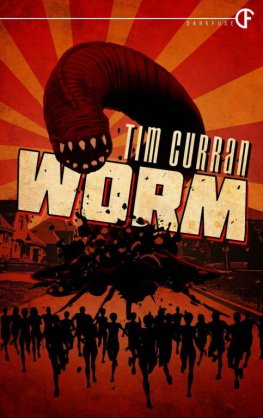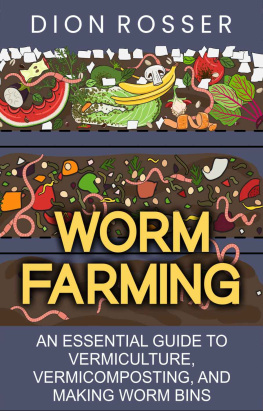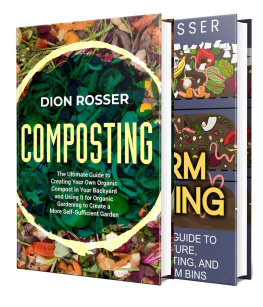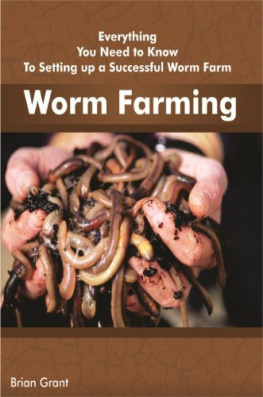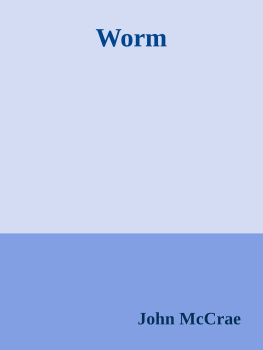Nancarrow Loren - The worm book: the complete guide to worms in your garden
Here you can read online Nancarrow Loren - The worm book: the complete guide to worms in your garden full text of the book (entire story) in english for free. Download pdf and epub, get meaning, cover and reviews about this ebook. City: Berkeley;Calif, year: 1998;2012, publisher: Ten Speed Press, genre: Children. Description of the work, (preface) as well as reviews are available. Best literature library LitArk.com created for fans of good reading and offers a wide selection of genres:
Romance novel
Science fiction
Adventure
Detective
Science
History
Home and family
Prose
Art
Politics
Computer
Non-fiction
Religion
Business
Children
Humor
Choose a favorite category and find really read worthwhile books. Enjoy immersion in the world of imagination, feel the emotions of the characters or learn something new for yourself, make an fascinating discovery.

- Book:The worm book: the complete guide to worms in your garden
- Author:
- Publisher:Ten Speed Press
- Genre:
- Year:1998;2012
- City:Berkeley;Calif
- Rating:4 / 5
- Favourites:Add to favourites
- Your mark:
- 80
- 1
- 2
- 3
- 4
- 5
The worm book: the complete guide to worms in your garden: summary, description and annotation
We offer to read an annotation, description, summary or preface (depends on what the author of the book "The worm book: the complete guide to worms in your garden" wrote himself). If you haven't found the necessary information about the book — write in the comments, we will try to find it.
The worm book: the complete guide to worms in your garden — read online for free the complete book (whole text) full work
Below is the text of the book, divided by pages. System saving the place of the last page read, allows you to conveniently read the book "The worm book: the complete guide to worms in your garden" online for free, without having to search again every time where you left off. Put a bookmark, and you can go to the page where you finished reading at any time.
Font size:
Interval:
Bookmark:
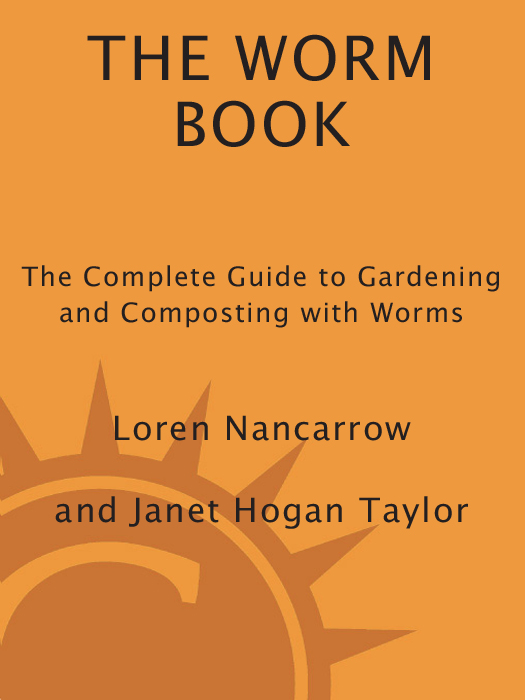
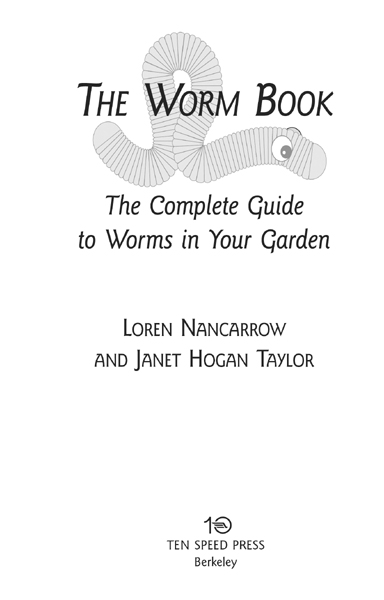
Copyright 1998 by Loren Nancarrow and Janet Hogan Taylor
All rights reserved. Published in the United States by Ten Speed Press, an imprint of the Crown Publishing Group, a division of Random House, Inc., New York.
www.crownpublishing.com
www.tenspeed.com
Ten Speed Press and the Ten Speed Press colophon are registered trademarks of Random House, Inc.
Library of Congress Cataloging-in-Publication Data
Nancarrow, Loren
The worm book: the complete guide to worms in your garden / by Loren Nancarrow and Janet Hogan Taylor
p. cm.
1. Earthworms. 2. Earthworm culture.
3. Gardening. I. Taylor, Janet Hogan, 1954-. II. Title.
SB998-E4N35 1998 97-48841
639.75dc21
eISBN: 978-0-307-78954-9
Illustrations by Janet Hogan Taylor
v3.1
The authors wish to acknowledge their gratitude to the following people (and others): Julie Castiglia, our agent and friend, who believed in us and made our books possible; Don Trotter (alias Dr. Curly), for his love of things that grow and his willingness to share his great knowledge when we really need it; our familiesBrian, Evan, Leah, and Sue, and Susie, Graham, Hannah, and Brittawho have learned more about earthworms than any two families should have to know; the television viewers of San Diego, who have eagerly field-tested our data and ideas; and finally, to earthworms everywhere, who surely do work harder than us.
Thank you all!
The body structure of an earthworm
W HY D O W E N EED W ORMS ?
On the small farm we tend in San Diego, California, earthworms do most of the work. The farm has a 3,000-square-foot vegetable garden. We dont use rototillers because they compact the soil. Instead, earthworms do the tilling. They also help fertilize our crops, condition the soil, and eat our leftovers. In our orchard, they keep the soil near the fruit trees loose and rich. Earthworms are at work twenty-four hours a day helping to keep the farm a showplace.
Beyond the horticultural advantages, earthworms provide a diversion for children in the garden. Kids will happily dig and collect earthworms long enough to get some weeding done.
Simply put, earthworms are the hardest working creatures on (or under) the earth. They are worthy of our respect and admiration, and yet historically theyve evoked fear and loathing. After all, its worms that crawl in and out and eat our snout, and worms that we have to eat if nobody likes us. Its a shame that a couple of unfortunate childrens songs lead us to think poorly of such magnificent organisms. These remarkable workers have many important roles in nature, including mixing and aerating the soil, improving soil structure and water infiltration, helping moderate soil pH, bringing up minerals in the soil, making nutrients more available to plants, breaking down plant and animal material into compost, and increasing beneficial microbial action in the soil. These are no small tasks, but the earthworm accomplishes them easily through its daily feeding habits.
Do you want to get rich? There are many people who will tell you that earthworms can help you do it beyond your wildest dreams. Dont believe it! Do believe this: there are not enough earthworms in the soil today. Regular plowing and spraying, disturbing the soil, and soaking it with chemical fertilizers and pesticides all take their toll on earthworms. Society is beginning to learn what damage these substances do to the soil and its inhabitants; now we can begin the long task of rejuvenating the soil. Perhaps the best thing you can do to help is to grow some earthworms in a garden bed outside or in a bin under your kitchen sink. Sell some if youd like, or sell their castings instead, or just grow them to return to the soil, which is so in need of your earthworms labor. Along the way youll learn a bit of husbandry and biology. Youll be amazed at an earthworms ability to convert what we think of as garbage into gold, and youll be doing your part to put the natural order back in place. Read on to learn how earthworms work their magicand how you can be a part of it.
There are many different types of soil all around the world. Soils can be loamy, sandy, or clay/adobe, just to name a few, but soil itself is made up of two main parts. One part is made up of rock particles that at one time or another were part of a larger rock or stone. Over time, erosion of rocks and stones by wind and water produces soil particles. (An example of this kind of soil particle is sand. If you look closely at sand, each particle looks likeand isa miniature rock.)
The other part of soil is decaying organic material. As plants and animals die and decompose, they are broken up into smaller particles called humus. Its the humus part of soil that holds water, feeds plants, and keeps the soil from becoming too hard for plants to grow in. By eating and breaking down large pieces of decaying matter, earthworms play a key role in increasing the humus in soil.
The United States Department of Agriculture decided to test fertilizer versus earthworms over forty years ago. To do this, the department started with two containers of poor soil. To one container they added dead worms, fertilizer, and grass seed. To the other container they added live worms and grass seedno fertilizer. To their amazement, the grass seed in the container with the live worms grew four times faster than the grass seed in the container with dead worms and fertilizer.
A nightcrawler is very strong for its size. A nightcrawler that weighs only 1/13 of an ounce, has been shown to move a stone that weighs 2 ounces. That is equivalent to a 200-pound man moving over 2 tons.
It is estimated that in an area with large numbers of earthworms, the worms can cover an acre of land with as much as eighteen tons of new soil each year; but it is also estimated that we are using seventeen times more topsoil than is being produced.
Earthworms are essential in good soil composition. As they burrow through the soil, they open it up and help keep it loose. This tilling action allows oxygen and water to get down into the soil where they can be taken up by plants; these elements in turn improve soil conditions for beneficial bacteria and other microorganisms that contribute to healthy soils. Earthworms also bring up soil from deeper soil levels to the top and then bring topsoil back down again. Over time, soil that is brought up by worms will cover seeds and allow them to germinate. This process can bury rocks and other objects.
Plant roots have an easier time getting down into the soil when they follow earthworm burrows. Nitrogen-fixing bacteria, needed by plants for growth and vigor, have been found in large numbers along the sides of earthworm burrows.
When earthworms feed, they take in bits of rock and organic matter (humus), digest what they can, and deposit the rest as excrement (castings). Earthworm castings improve the soil in several ways:
- Castings are close to neutral in pHaround 7 on the pH scaleno matter what kind of soil the worm ate. For example, even if a worm fed in a very acidic soil, its castings would be neutral, not acidic. Earthworm castings also contribute to neutralizing soil pH by adding calcium carbonate to the soil.
- Castings are rich in minerals and nutrients needed by plants. A study at Cornell University showed that the nutrient level of castings is usually much higher than that of the surrounding soil. Castings were found to be high in nitrogen, potassium, phosphorus, magnesium, and trace minerals. Castings were also shown to supply needed micronutrients to plants. Another study estimated that castings contain five times the available nitrogen, seven times the available potash, and one and a half times the calcium found in good topsoil. So castings are excellent plant fertilizers and provide nutrients in a form immediately available for plant use.
Font size:
Interval:
Bookmark:
Similar books «The worm book: the complete guide to worms in your garden»
Look at similar books to The worm book: the complete guide to worms in your garden. We have selected literature similar in name and meaning in the hope of providing readers with more options to find new, interesting, not yet read works.
Discussion, reviews of the book The worm book: the complete guide to worms in your garden and just readers' own opinions. Leave your comments, write what you think about the work, its meaning or the main characters. Specify what exactly you liked and what you didn't like, and why you think so.

